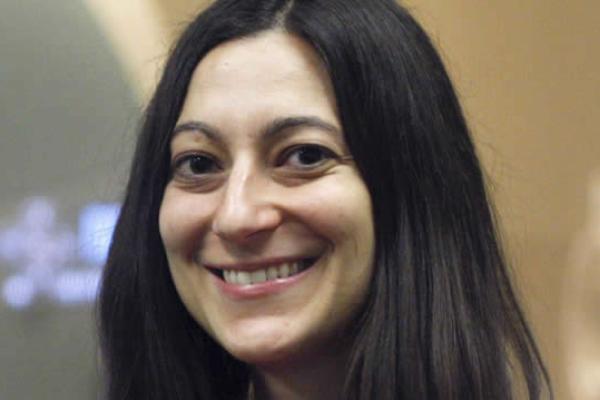Psychology Professor First to Reveal How Brain Represents 3-D Information

Julie Golomb, assistant professor of psychology and director of Ohio State's Vision and Cognitive Neuroscience Lab, is lead author of a new neuroimaging study revealing, for the first time, how different parts of the brain represent an object’s location in depth compared to its 2-D location.
Golumb, along with Nonie Finlayson, a former postdoctoral researcher in psychology at Ohio State who now is at Univeristy College London, and Xiaoli Zhange, a psychology graduate student at Ohio State, used functional magnetic resonance imaging to scan the brains of volunteers as they used 3-D glasses to look at simple images. Results showed that when the images first enter their visual cortex, the brain codes the 2-D location. However, as the brain continues its processing, the brain shifts to decoding the depth information.
Golomb said many scientists have investigated where and how the brain decodes two-dimensional information. Other researchers have looked at how the brain perceives depth; depth information must be inferred in our brain by comparing the slightly different views from the two eyes (what is called binocular disparity) or from other visual cues. However, this is the first study to directly compare both 2-D and depth information at one time to see how 3-D representations emerge and interact in the brain, she said.
Golomb said that future studies will look to more closely quantify and model the nature of three-dimensional visual representations in the brain.
“This is an important step in understanding how we perceive our rich, three-dimensional environment,” she said.
The study was published recently in the journal NeuroImage.
